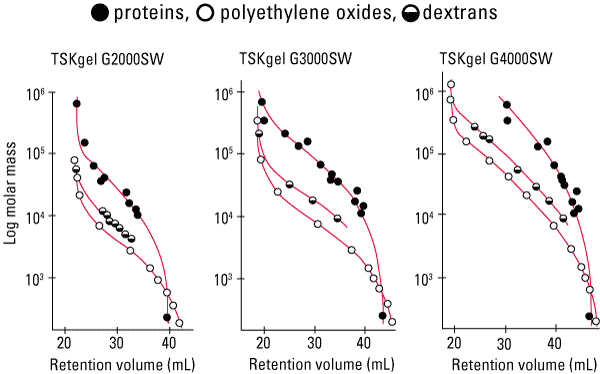TSKgel SW Columns for Protein Analysis
TSKgel SW columns, introduced in 1977, have become synonymous with analyzing protein molar masses in the field of biotechnology.
TSKgel SW columns are based on highly porous silica particles, the surface of which has been shielded from interacting with proteins by derivatization with ligands containing diol functional groups. TSKgel SW columns stand out from other silica- or polymer-based high performance size exclusion columns by virtue of their large pore volumes.
The calibration curves are shown for globular proteins, polyethylene oxides and dextrans for each of the three TSKgel SW columns.
Calibration Curves for TSKgel SW Columns
|

|
Column: TSKgel SW columns, 7.5 mm ID × 60 cm × 2
Mobile phase: dextrans and polyethylene oxides: distilled water;
proteins: 0.3 mol/L NaCl in 0.1 mol/L phosphate buffer, pH 7.0
Flow rate: 1.0 mL/min
Detection: UV @ 220 nm and RI
Samples: proteins, polyethylene oxides, dextrans
|
Tables within the tabs below summarize the molar mass ranges for the TSKgel G2000SW, G3000SW and G4000SW columns for globular proteins, polyethylene oxides and dextrans that can, at least partially, access the particle pores.